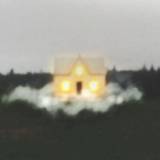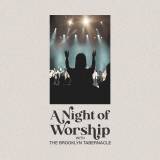Creating a Silent Stage
Here’s a typical scenario: you arrive at the venue, and the stage is smaller than you were told. In fact, your band will barely fit on it. The stage is also backed into a corner, surrounded by hard surfaces that cause harsh, reflected sound. No matter how softly your drummer plays or how low the guitar amp volume is set, the singer’s monitor wedge won’t get loud enough to meet the need without feeding back. Not to mention, the overall stage volume is competing with the PA speakers and making the front of house sound muddy, unbalanced, and indistinct.
All the tools of a musician’s trade make sound: instruments, amplifiers, and speakers. Acoustic drums and guitar amplifiers not only create specific sonic characteristics, but they’re also designed to project sound—loudly! Harnessing and managing that sound, which is inextricably tied to the musician’s performance, can be difficult. Communicating the best version of that sound to the audience is the goal of a silent stage.
What Is a Silent Stage?
“Silent” is a relative term in this case. Obviously, as soon as a musician walks onto a stage, there is noise present; it’s no longer silent. The term “silent stage” refers to the isolation or containment of anything onstage designed to project sound. This is achieved through various means: eliminating monitor wedges by using in-ear monitors or headphones; reducing the sound from backline instrument amplifiers through isolation boxes or eliminating them by using direct input only; isolating the sound from drums and percussion with shields or booths, or by using pads to trigger electronic drum sounds; or using partial shields to isolate any other instrument designed to project sound, such as a trumpet or saxophone.A silent stage has lots of benefits. For example, every input will have the cleanest possible representation of the intended sound source. No matter how softly your singer sings, the sound from the rest of the band won’t be bleeding into that mic. A silent stage eliminates “monitor wars” between performers. Since there are no live monitor wedges onstage and each mix is sent directly to a performer’s in-ear monitors, no one else hears any other mix, and there’s no competition for sonic space. A silent stage also gives the front-of-house mix engineer the best possible scenario for controlling what the audience hears. No matter what’s happening with each performer’s individual instrument or monitor mix, the sound in the PA remains consistent.
 In-ear Monitors (IEM)
In-ear Monitors (IEM)
There are a wealth of options in the world of IEMs. Westone and Shure
offer multiple options and price ranges, including the very best in
multiple-driver systems. I have used triple-driver Westones with custom-fitted ear molds, equivalent to the UM Pro 30,
while playing over 150 shows per year on a variety of stages. In every
scenario, they sound balanced, full, and natural, which really makes
performing easier.
Monitor Consoles
Here there are two ways to go:- A monitor console, where each instrument is plugged in and individual mixes for each performer are sent out to headphone amps (for wired IEMs) or transmitters (in the case of wireless IEMs)
- Individual headphone mix stations per performer that connect to the front-of-house console via Cat 5 cable and give each performer onstage a personal mixer. Aviom, Behringer, Digital Audio Labs, and Hear Technologies all make variants of this type of system.
Guitars
There’s nothing quite like the sound and feel of a cranked amp: vibrating, resonating, interacting with the guitar’s pickups, speakers slightly straining. Take it from a guitar player, it’s a real rush! Conversely, nothing is more annoying to the rest of the band and the front-of-house engineer than a loud, brash guitar amp bleeding into every open mic onstage and washing out not only the guitar sound, but the entire mix. Take it from a guitar player, it’s a real pain! There are many solutions to this problem, and as a guitarist you have to find the one that works for you. The following are some ideas to consider:
 Modeling
Modeling
The Line 6 Helix and Kemper Profiler have drastically advanced the
sound of modeling. Consequently, they’ve raised the bar for everyone
making modeling units. The flexibility and easy use of modelers have
always been a no-brainer, but the sounds and overall feel have greatly
improved. If you have an inkling to go in this direction, it’s worth a
serious look.Speaker Simulators
If you love the sound of your cranked amp, but want to eliminate the volume from your speaker cabinet, Mesa/Boogie, Two Notes, Radial, and Rivera all make dummy loads with speaker simulators. This way, you can either completely disconnect your speaker cabinet or play at a whisper-quiet volume. If you are ready to try a whole new amp, Hughes & Kettner, Mesa/Boogie, and Rivera make amps with built-in dummy loads and speaker simulators. If your speaker cabinet is buried in a road case or offstage, Radial, Hughes & Kettner, and Two Notes make direct boxes with speaker simulators that easily work with your amp and cabinet.Isolation
If you can’t live without every part of your rig, and you have the space to isolate and mic your speaker cabinet, ClearSonic isolation panels can let you leave your amp onstage, looking good. Although this won’t be a totally silent option, it will seriously reduce the volume to an easily manageable level. I personally use a combination of isolated, mic’d speaker cabinets, and a speaker-simulated DI whenever I can. It gives the most options to FOH and monitor engineers.Drums
The sound and feel of a drumset onstage drives the entire band. Drummers are at one with their kit, their instrument. So what can you do to implement a silent stage that incorporates drums? There are several options.Electronic drums
Electronic drums will never replace acoustic drums, but depending on the music and the player, drummers can indeed find their voice on electronic kits. If the band’s goal is a silent stage, electronic drums are by far the easiest way to make it happen. Roland and Yamaha offer top-of-the-line pad kits and sound modules. Pearl and Nfuzd Audio have trigger pads that fit over your existing drums, if you want a more familiar look and feel.
Iso Booth
To keep your drumset intact while keeping the volume out of the other
onstage mics, ClearSonic offers multiple levels of shields, from a
simple, 3-section drum shield—which will reduce the onstage volume
noticeably—all the way to a MiniMega, which is a total, 360-degree
enclosure, complete with a specially designed lid, a door, and a
built-in fan. If you need to go silent, especially in a permanent
installation such as a house of worship, the MiniMega offers 60%-70%
sound reduction. The other upside of drum isolation is that it sends a
bit of the reflected drum sound back into the drum mics, adding depth to
the drum sound.Wrap-up
A silent stage is not for everyone. Many bands end up with a hybrid approach of silent instruments blended with some that are “volume controlled.” Using these tips can help you clean up and manage your stage volume, whatever approach you ultimately take. The real goals are a more cohesive blend, better sound to the audience, and performers who can hear each other, resulting in a better scenario for making music. Ultimately that will benefit both the performers and the audience.
Creating a Silent Stage
![Creating a Silent Stage]() Reviewed by Admin
on
10:58:00 AM
Rating:
Reviewed by Admin
on
10:58:00 AM
Rating:
















Post a Comment